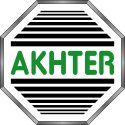Working in the Education Sector
AS A SUPPLIER OF COMPUTER AND NETWORKING SOLUTIONS TO SCHOOLS AND COLLEGES SINCE 1979.
Akhter’s dedicated Education Division has developed an understanding of requirements in this sector, whether you require a simple IT accessory or a complete network overhaul. Akhter Computers offers a wide range of products specifically designed for the education sector. From desktop computers to laptops, tablets, and interactive whiteboards, Akhter Computers provides high-quality technology solutions to enhance the learning experience for students and educators alike. With a focus on durability, performance, and affordability, Akhter Computers' products are perfect for classrooms, computer labs, and administrative offices in schools and universities. The tablets are lightweight and portable, making them ideal for interactive learning activities both inside and outside the classroom. The interactive whiteboards offer a hands-on approach to teaching, allowing educators to create engaging and dynamic lessons for their students. In recent years, Akhter has earned a favourable reputation for fast network upgrades and migrations during school holidays so staff and students are not affected by any system downtime. From an initial meeting, Akhter can suggest options for you to get the most from your network and offer to partner with you to provide a personal service and a comprehensive solution to your specific needs. Powerful, easy to use and fully Microsoft compatible network management tools enable teachers to perform many everyday tasks, empowering them in the classroom. Akhter is a Green conscious company and will always advise products and solutions that best protect the environment and save money in energy costs. Hardware plays a crucial role in the education sector, providing the physical tools and devices necessary for effective teaching and learning. Here are some key types of hardware commonly used in educational settings: Computers and Laptops: Essential for both teachers and students, computers and laptops provide access to digital resources, online courses, and educational software.Tablets: Devices like iPads and Android tablets are popular in classrooms for their portability and ease of use. They can run educational apps, access e-books, and facilitate interactive learning.
Interactive Whiteboards: These digital boards allow teachers to display multimedia content, annotate lessons in real-time, and engage students through interactive presentations.
Projectors: Projectors enable teachers to display content from computers or mobile devices onto a larger screen, making it easier for students to see and engage with the material.
Document Cameras: Document cameras allow teachers to display documents, images, or objects to the whole class in real-time, enhancing traditional teaching methods with visual aids.
Smartphones: Many students use smartphones for educational purposes, such as accessing educational apps, participating in online discussions, and conducting research.
Virtual Reality (VR) and Augmented Reality (AR) Devices: VR headsets and AR applications provide immersive learning experiences, allowing students to explore complex concepts in an engaging environment.
Sound Systems: Good audio equipment, including microphones and speakers, helps ensure that all students can hear lessons clearly, particularly in larger classrooms.
Network Infrastructure: Routers, switches, and access points are essential for creating a strong and reliable Wi-Fi network that supports online learning and collaboration among students and teachers.
Charging Stations: With the proliferation of devices such as tablets and laptops in classrooms, charging stations are crucial for keeping devices powered and ready for use.
3D Printers: These printers enable hands-on learning experiences by allowing students to create physical objects from digital designs, particularly in subjects like art, engineering, and manufacturing.
Wearable Technology: Devices such as smartwatches and fitness trackers can be used in health education and programming classes to teach students about technology and data collection.
Robotics Kits: Robotics and coding kits (like LEGO Mindstorms or Raspberry Pi) help students learn programming, engineering, and problem-solving skills through hands-on projects.
Security Hardware: Cameras and access control systems are important for ensuring the safety and security of students and staff within educational environments.
Assistive Technology: Hardware designed to support students with disabilities, such as speech recognition software and adaptive keyboards, helps create inclusive learning environments.
Integrating the right hardware in educational settings can enhance learning experiences, foster engagement, and prepare students for a technology-driven world. It is essential for educational institutions to stay up to date with the latest hardware developments and invest wisely to support their pedagogical goals. Talk to one of our advisors, we're here to help.
